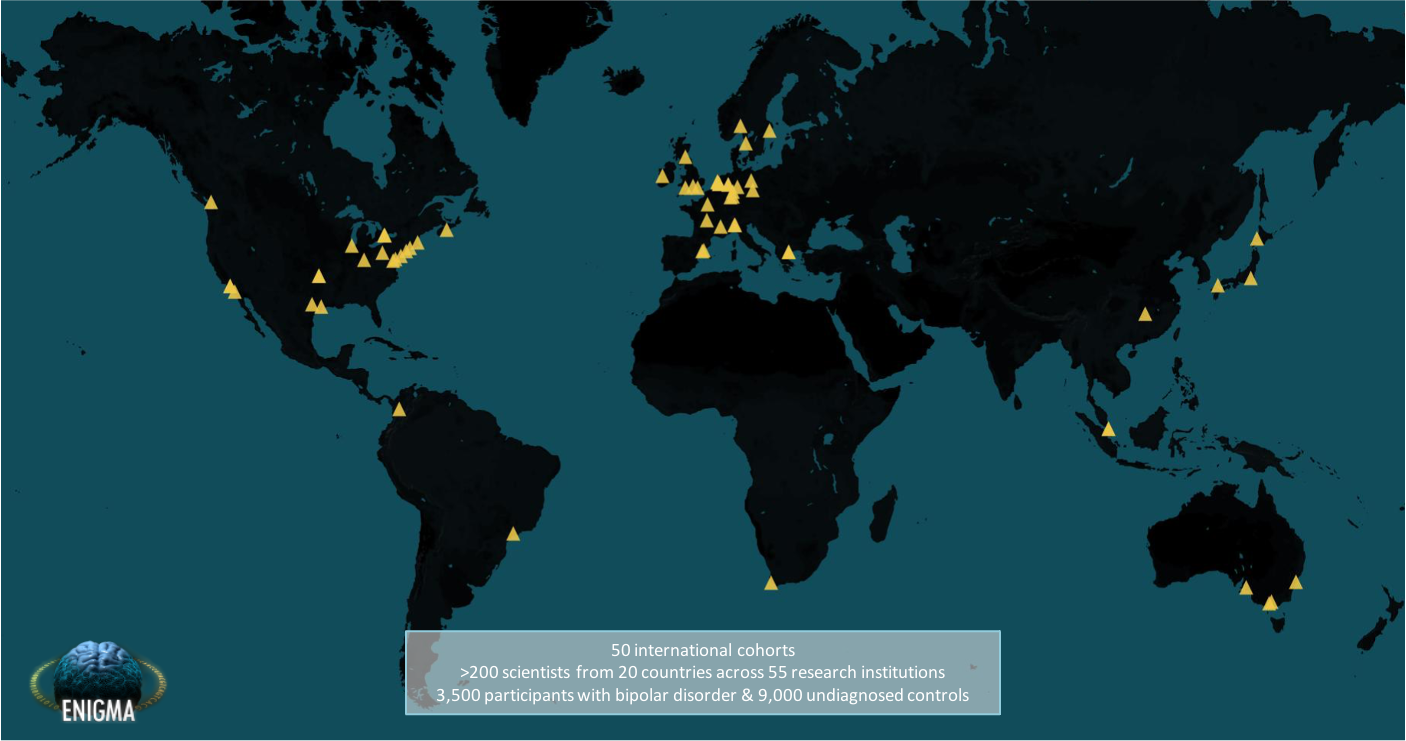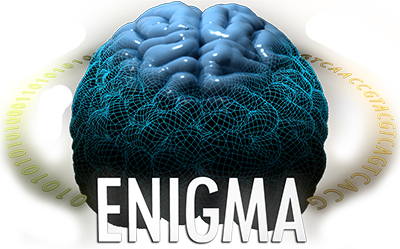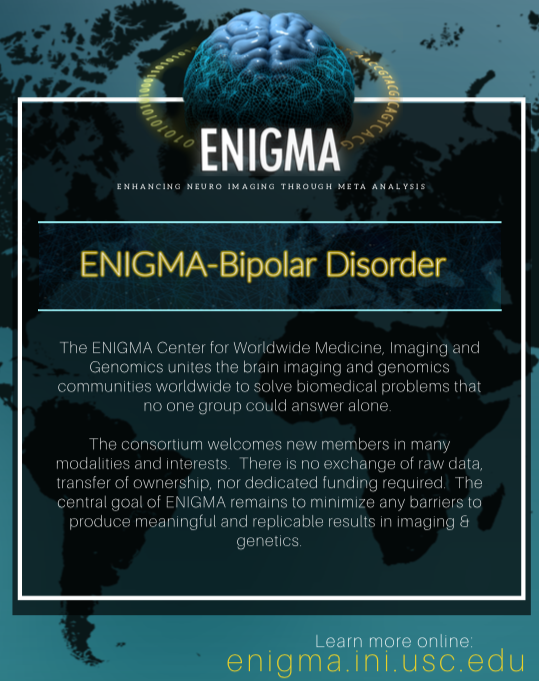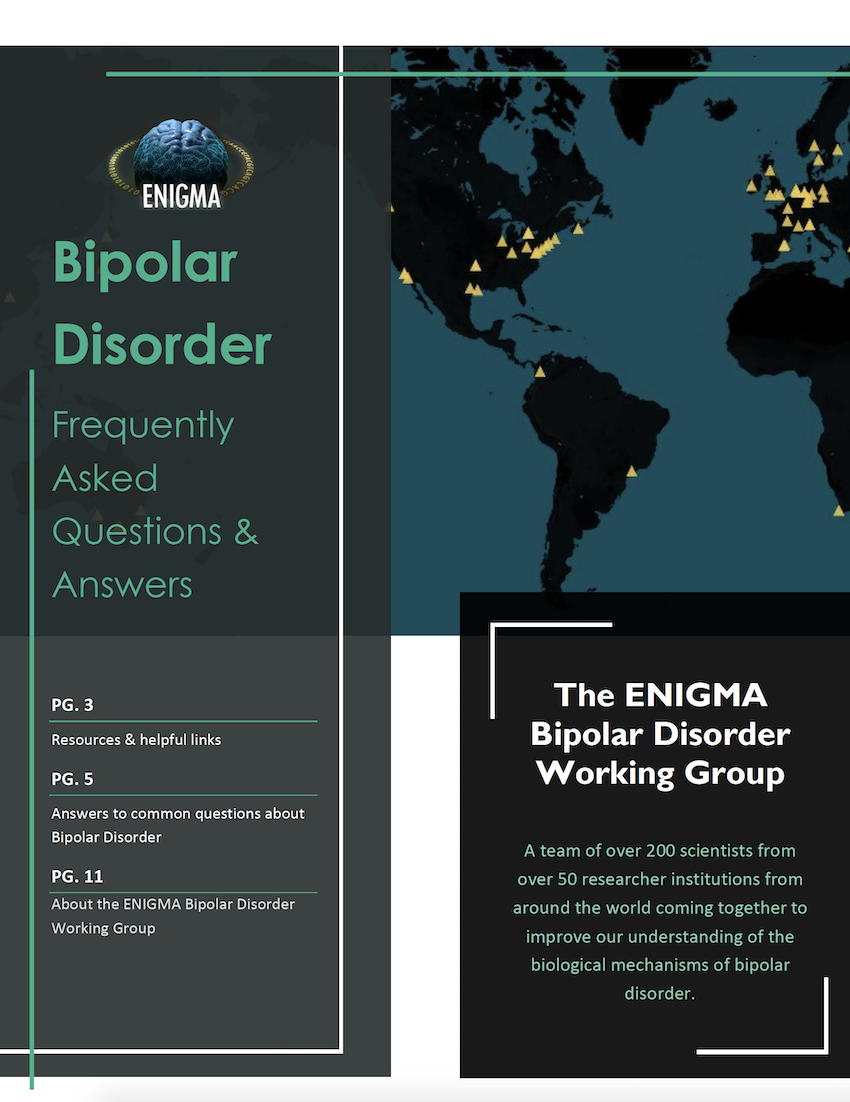

The ENIGMA Bipolar Disorder Working Group (ENIGMA-BD) was founded in the fall of 2012 and represents an international effort including over 200 clinicians, neuroscientists, bioengineers, and geneticists pooling data and resources to improve bipolar disorder nosology, diagnosis, targeted treatment, and patient outcomes. As part of the wider ENIGMA Consortium we aim to 1) improve efficient and consistent extraction of brain metrics for improved study replication, 2) standardize existing international bipolar disorder data sets to empower large-scale, ecologically valid studies, and 3) perform direct comparisons of brain and clinical measures across psychiatric disorders to better understand the common and distinct markers underlying mental illness on an unprecedented scale.
The Bipolar Disorder Working Group is actively recruiting collaborators. If you have acquired neuroimaging data on individuals with bipolar disorder and are interested in participating, please contact ENIGMA-BD chairs Drs. Ole A. Andreassen and Christopher R. K. Ching.
Follow ENIGMA-BD on social media: @enigma_bipolar
Scientific findings from ENIGMA-BDFor more information and details about published, as well as ongoing, ENIGMA-Bipolar working group activities and scientific findings, check out our brochure linked below: |
FAQ for patients, families and stakeholdersTo explore common questions about bipolar disorder from patients, families, caregivers and advocates, and what we as researchers are doing to improve our knowledge of the disorder, check out our brochure linked below: |
Media
Interviews with experts on bipolar disorder
Diagnosis and treatment in bipolar disorder
Member information
Bipolar Disorder Working Group Memorandum of Understanding (MOU): Bipolar Working Group members are asked to sign a short MOU agreement that has been standardized across the ENIGMA projects and provides basic framework to protect data privacy, facilitate data sharing, encourage academic productivity, ensure appropriate authorship and publication credit, and implements a system to track and archive data, analyses and publications related to the Bipolar Working Group.
Minutes from previous meetings/teleconferences regarding this ENIGMA-Bipolar project can be found here (Password Protected).
Current participating members in the ENIGMA-BD working group: Member List
New ENIGMA-BD WG members can click here for preprocessing resources.
Publications
ENIGMA Bipolar Disorder Working Group Published Studies:
- The ENIGMA Bipolar Disorder Working Group in review: Findings and future directions:
What we learn about bipolar disorder from large-scale neuroimaging: Findings and future directions from the ENIGMA Bipolar Disorder Working Group (2020).
- Subcortical structure:
Subcortical volumetric abnormalities in bipolar disorder (2016).
- Hippocampal subfields:
In vivo hippocampal subfield volumes in bipolar disorder—A mega-analysis from The Enhancing Neuro Imaging Genetics through Meta-Analysis Bipolar Disorder Working Group (2020).
- Cortical structure:
Cortical abnormalities in bipolar disorder: an MRI analysis of 6503 individuals from the ENIGMA Bipolar Disorder Working Group (2018).
- Machine learning for diagnostic classification:
Using structural MRI to identify bipolar disorders – 13 site machine learning study in 3020 individuals from the ENIGMA Bipolar Disorders Working Group (2018).
- White matter microstructure:
Widespread white matter microstructural abnormalities in bipolar disorder: evidence from mega- and meta-analyses across 3033 individuals (2019).
- Familial risk across schizophrenia and bipolar disorder:
The Association Between Familial Risk and Brain Abnormalities Is Disease Specific: An ENIGMA-Relatives Study of Schizophrenia and Bipolar Disorder (2019).
- Intelligence, educational attainment, and familial risk across schizophrenia and bipolar disorders:
Intelligence, educational attainment, and brain structure in those at familial high-risk for schizophrenia or bipolar disorder (2020).
- Shared neurobiology across 6 psychiatric disorders:
Virtual Histology of Cortical Thickness and Shared Neurobiology in 6 Psychiatric Disorders (2020).
- Shared developmental neurobiology across 6 psychiatric disorders:
Virtual Ontogeny of Cortical Growth Preceding Mental Illness (2022).
- Relationship between neuroimaging and genetic markers across psychiatric disorders:
Structural brain imaging studies offer clues about the effects of the shared genetic etiology among neuropsychiatric disorders (2021).
- Association between body mass index (BMI) and subcortical structures:
Association between body mass index and subcortical brain volumes in bipolar disorders–ENIGMA study in 2735 individuals (2021).
- Cortical and subcortical structural correlates of insomnia:
Brain structural correlates of insomnia severity in 1053 individuals with major depressive disorder: results from the ENIGMA MDD Working Group (2020).
- Associations between body mass index (BMI) and cortical structures:
Diagnosis of bipolar disorders and body mass index predict clustering based on similarities in cortical thickness—ENIGMA study in 2436 individuals (2021).
- Large-scale modeling of longitudinal brain change in bipolar disorder:
Longitudinal Structural Brain Changes in Bipolar Disorder: A Multicenter Neuroimaging Study of 1232 Individuals by the ENIGMA Bipolar Disorder Working Group (2021).




